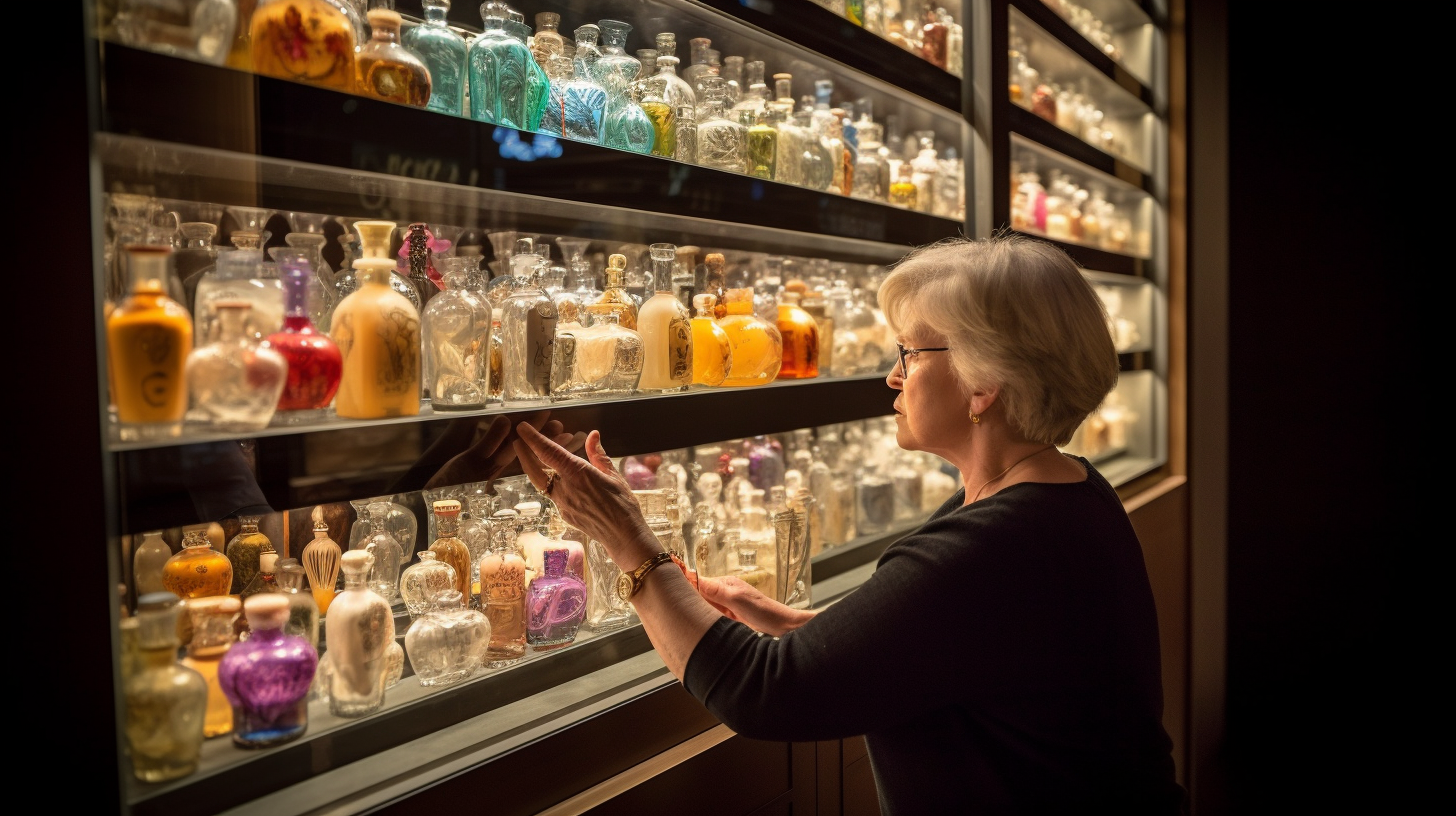How to Understand Fragrance Classification: A Complete Guide
Do you ever find yourself standing in front of a perfume counter, overwhelmed by the vast array of fragrances? With so many scents to choose from, it can be challenging to understand the different types of fragrances and how they are classified. In this complete guide, we will take you on a journey through the fascinating world of fragrance classification. By the end, you will have a solid understanding of the various fragrance families, types, notes, and categorization systems. So, whether you’re a perfume enthusiast or simply curious about the art of scent, let’s dive in and explore how fragrances are classified.
1. Understanding Fragrance Families
Fragrance families are the broad categories that perfumes and scents are organized into based on their predominant characteristics. Each fragrance family has its own unique olfactory profile and is associated with certain ingredients and styles. By familiarizing yourself with these families, you can quickly identify which scents align with your personal preferences.
Here are some of the most common fragrance families:
- Floral: Floral fragrances feature prominent floral notes such as rose, jasmine, or lily. They evoke a sense of femininity and elegance.
- Oriental: Oriental fragrances are warm, spicy, and often contain exotic ingredients like vanilla, amber, or incense. They create a rich and sensual aura.
- Fresh: Fresh fragrances are light and invigorating with citrusy or green notes. They give off a clean and energetic vibe.
- Woody: Woody fragrances showcase notes like cedarwood, sandalwood, or vetiver. They provide a warm and earthy quality.
- Aromatic: Aromatic fragrances are characterized by herbal and green notes like lavender, basil, or mint. They have a refreshing and therapeutic appeal.
- Chypre: Chypre fragrances combine citrus top notes with woody and mossy base notes. They exude a sophisticated and timeless charm.
It’s important to note that these fragrance families serve as a general guide, and many perfumes may contain elements from multiple families. However, understanding these categories will help you navigate the vast world of fragrances more effectively.
2. Exploring Fragrance Types
In addition to fragrance families, perfumes can also be classified into different types based on their concentration of aromatic compounds. The concentration level determines the strength and longevity of the scent. Let’s take a closer look at the most common fragrance types:
- Parfum (Extrait de Parfum): Parfum has the highest concentration of aromatic compounds, typically ranging from 20-30%. It is the most potent and long-lasting fragrance type, often lasting for more than 8 hours.
- Eau de Parfum (EDP): EDP contains a slightly lower concentration of aromatic compounds, usually around 15-20%. It offers excellent longevity, lasting for around 6-8 hours.
- Eau de Toilette (EDT): EDT has a lighter concentration of aromatic compounds, typically ranging from 5-15%. It provides a moderate longevity of approximately 4-6 hours.
- Eau de Cologne (EDC): EDC contains an even lower concentration of aromatic compounds, usually around 2-4%. It is known for its refreshing and invigorating qualities but has a shorter lifespan of around 2-4 hours.
Choosing the right fragrance type depends on your personal preference, the occasion, and the desired longevity of the scent. Parfum and Eau de Parfum are ideal for special occasions or when you want a long-lasting fragrance, while Eau de Toilette and Eau de Cologne are great for everyday wear or when you prefer a lighter scent.
3. Decoding Fragrance Notes
Fragrance notes are individual scents that make up the overall composition of a perfume. They can be divided into three categories: top notes, heart (or middle) notes, and base notes. Understanding these notes will help you recognize the different stages of a fragrance’s development over time.
- Top Notes: Top notes are the initial scents that you experience when you first apply a perfume. They are usually light and evaporate quickly, lasting for around 15-30 minutes. Common top notes include citrus fruits, herbs, or aromatic spices.
- Heart (Middle) Notes: After the top notes fade away, the heart notes emerge. These scents form the core of the fragrance and typically last for several hours. Floral or fruity ingredients often make up the heart notes.
- Base Notes: Base notes are the foundation of a fragrance and provide depth and longevity. They appear as the top and heart notes dissipate and can last for several hours or even days. Common base note ingredients include woods, musk, vanilla, or amber.
The combination of different fragrance notes creates a harmonious blend that evolves over time, making each perfume unique and multi-dimensional.
4. Navigating Fragrance Categorization Systems
The fragrance industry has developed various categorization systems to help classify perfumes based on specific criteria. These systems provide a framework for understanding the characteristics and qualities of different fragrances. Let’s explore some of the most commonly used categorization systems:
- Fragrance Wheel: The fragrance wheel is a circular diagram that divides fragrances into four main categories: floral, oriental, fresh, and woody. Each category is further subdivided into more specific fragrance families. The fragrance wheel serves as a visual aid to understand the relationships between different fragrance families.
- Michael Edwards Fragrance Classification: Developed by Michael Edwards, this classification system is widely used in the perfume industry. It organizes fragrances into four hierarchical levels: fragrance families, genres, groups, and individual perfumes. This system provides a comprehensive framework for understanding the nuances and relationships between different fragrances.
- International Fragrance Association (IFRA) Categories: IFRA categorizes fragrances based on their intended use and concentration level of potentially allergenic ingredients. This system helps ensure consumer safety by providing guidelines for ingredient usage in different product types.
Exploring these categorization systems can deepen your understanding of how perfumes are classified and assist you in discovering new scents that align with your preferences.
5. The Evolution of Fragrance Classification
The art of fragrance classification has evolved over centuries, influenced by cultural shifts, technological advancements, and changing consumer preferences. Understanding the historical context behind fragrance classification can provide valuable insights into the development of modern perfumery.
In ancient civilizations such as Egypt and Mesopotamia, fragrance played a significant role in religious rituals and daily life. Fragrances were classified based on their source, such as floral or animal-derived scents.
During the Renaissance period, perfumers began experimenting with blending different scents, giving rise to more complex fragrances. Perfume classification expanded to include categories like floral, amber, and spice-based scents.
In the 19th century, advancements in organic chemistry allowed for the synthesis of new aromatic compounds. This led to the creation of entirely new fragrance families and expanded the possibilities for perfume classification.
Today, fragrance classification continues to evolve as perfumers push boundaries and explore innovative combinations of ingredients. New fragrance families and categorization systems emerge to reflect contemporary trends and consumer preferences.
6. Expert Insights: The Importance of Fragrance Classification
To gain further insights into the significance of fragrance classification, we reached out to renowned perfumer Sarah Thompson for her expert perspective.
“Fragrance classification is essential as it provides a common language for perfumers, retailers, and consumers alike,” says Thompson. “By understanding fragrance families and categorization systems, consumers can make informed choices when selecting a perfume that aligns with their preferences.”
Thompson also emphasizes the role of fragrance classification in guiding perfumers during the creative process:
“For perfumers, fragrance classification serves as a starting point for developing new scents. It helps us understand the characteristics and qualities associated with different fragrance families. We can then explore innovative combinations within these frameworks.”
Thompson’s insights highlight how fragrance classification benefits both consumers and perfumers by providing a common language and framework for understanding and creating fragrances.
Conclusion
Understanding fragrance classification is like having a secret key that unlocks the enchanting world of perfumery. By familiarizing yourself with fragrance families, types, notes, and categorization systems, you can confidently navigate the vast array of scents available.
Remember, fragrance families help you identify scents that align with your preferences, while fragrance types determine the strength and longevity of a perfume. Fragrance notes reveal the different stages of a fragrance’s development, and categorization systems provide frameworks for understanding the characteristics and relationships between different fragrances.
As you delve deeper into the art of fragrance classification, keep in mind its rich historical context and the continuous evolution of perfumery. And always trust your nose – it knows what scents resonate with your soul.
Now armed with this complete guide to fragrance classification, go forth and explore the world of scents with confidence!




